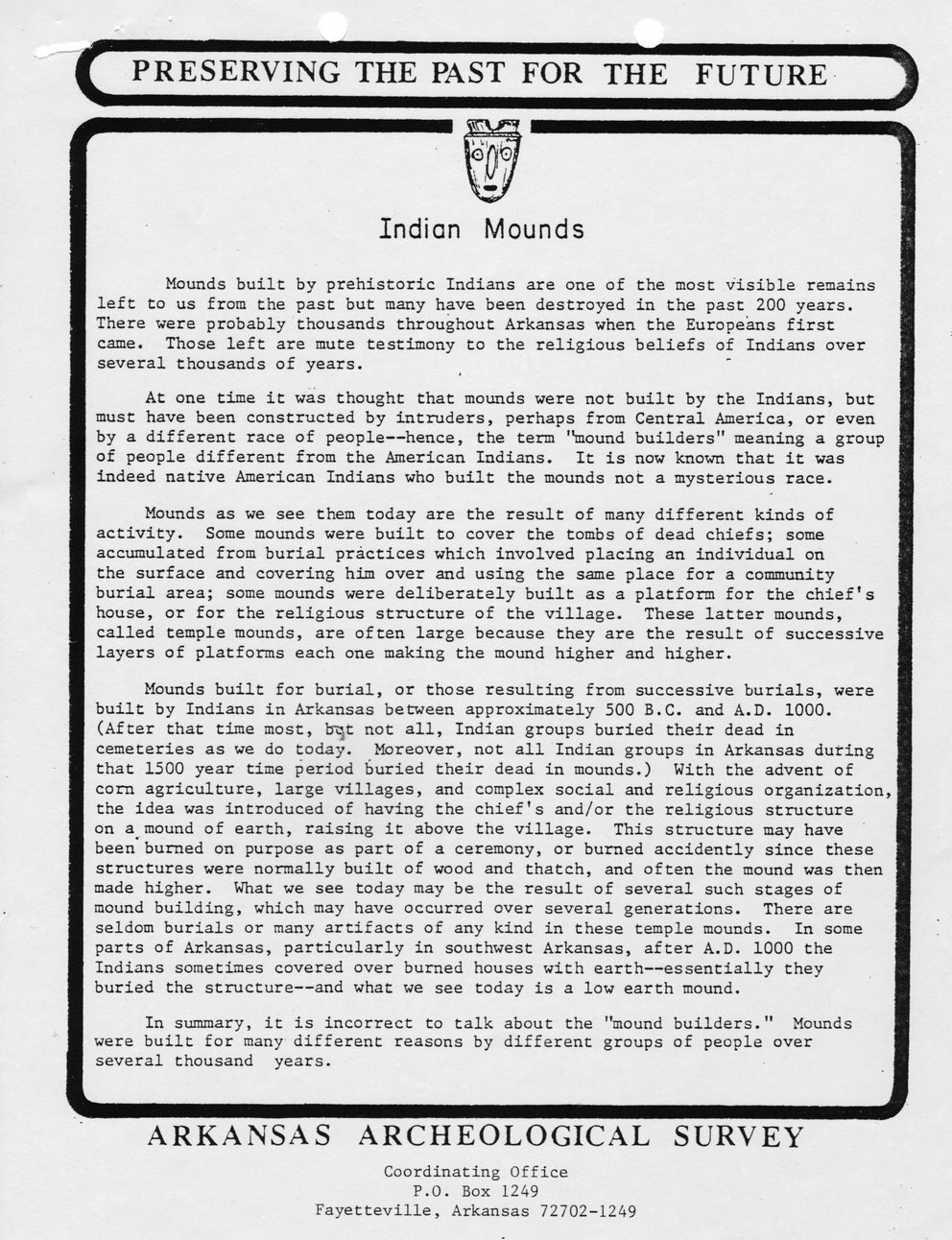This text was obtained via automated optical character recognition.
It has not been edited and may therefore contain several errors.
c PRESERVING THE PAST FOR THE FUTURE > Indian Mounds Mounds built by prehistoric Indians are one of the most visible remains left to us from the past but many have been destroyed in the past 200 years. There were probably thousands throughout Arkansas when the Europeans first came. Those left are mute testimony to the religious beliefs of Indians over several thousands of years. At one time it was thought that mounds were not built by the Indians, but must have been constructed by intruders, perhaps from Central America, or even by a different race of people—hence, the term "mound builders" meaning a group of people different from the American Indians. It is now known that it was indeed native American Indians who built the mounds not a mysterious race. Mounds as we see them today are the result of many different kinds of activity. Some mounds were built to cover the tombs of dead chiefs; some accumulated from burial practices which involved placing an individual on the surface and covering him over and using the same place for a community burial area; some mounds were deliberately built as a platform for the chief’s house, or for the religious structure of the village. These latter mounds, called temple mounds, are often large because they are the result of successive layers of platforms each one making the mound higher and higher. Mounds built for burial, or those resulting from successive burials, were built by Indians in Arkansas between approximately 500 B.C. and A.D. 1000. (After that time most, bijt not all, Indian groups buried their dead in cemeteries as we do today. Moreover, not all Indian groups in Arkansas during that 1500 year time period buried their dead in mounds.) With the advent of com agriculture, large villages, and complex social and religious organization, the idea was introduced of having the chief's and/or the religious structure on a mound of earth, raising it above the village. This structure may have been burned on purpose as part of a ceremony, or burned accidently since these structures were normally built of wood and thatch, and often the mound was then made higher. What we see today may be the result of several such stages of mound building, which may have occurred over several generations. There are seldom burials or many artifacts of any kind in these temple mounds. In some parts of Arkansas, particularly in southwest Arkansas, after A.D. 1000 the Indians sometimes covered over burned houses with earth—essentially they buried the structure—and what we see today is a low earth mound. In summary, it is incorrect to talk about the "mound builders." Mounds were built for many different reasons by different groups of people over several thousand years. ARKANSAS ARCHEOLOGICAL SURVEY Coordinating Office P.O. Box 1249 Fayetteville, Arkansas 72702-1249

Native Americans AAS-Indian-Mounds